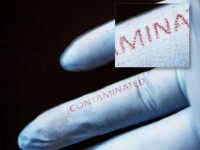 The new material contains antibiotics and nanoparticles, and could turn inkjet printing into an “effective tool for therapeutics, regenerative medicine and biosensing”.
The new material contains antibiotics and nanoparticles, and could turn inkjet printing into an “effective tool for therapeutics, regenerative medicine and biosensing”.
Researchers at Tufts University created the ink by using purified silk protein, or fibroin, to strengthen and protect the heat-sensitive biomolecules that have previously been researched as a medical application of inkjet printing, the institute’s news site Tufts News reported.
The polymer acts as a “cocoon” that can stabilise enzymes and antibodies and may be applied to many different mechanically robust formats. The published research was restricted to one inkjet cartridge, but the scientist think it could extend to multi-cartridge printing.
[adrotate banner=”248″]
Researchers have created a “custom library” of applications for the inkjet-printable silk inks, including: bacterial-sensing polydiacetylenes (PDAs) printed on surgical gloves, with the word “contaminated” printed on the glove turning from blue to red when exposed to E. coli; gold nanoparticles printed on paper, that can be applied to photonics and biology; and enzymes printed on paper to test the ink’s ability to entrain small functional molecules.
Fiorenzo Omenetto, senior author on the paper and Associate Dean for research, said: “We thought that if we were able to develop an inkjet-printable silk solution, we would have a universal building block to generate multiple functional printed formats that could lead to a wide variety of applications in which inks remain active over time.”
